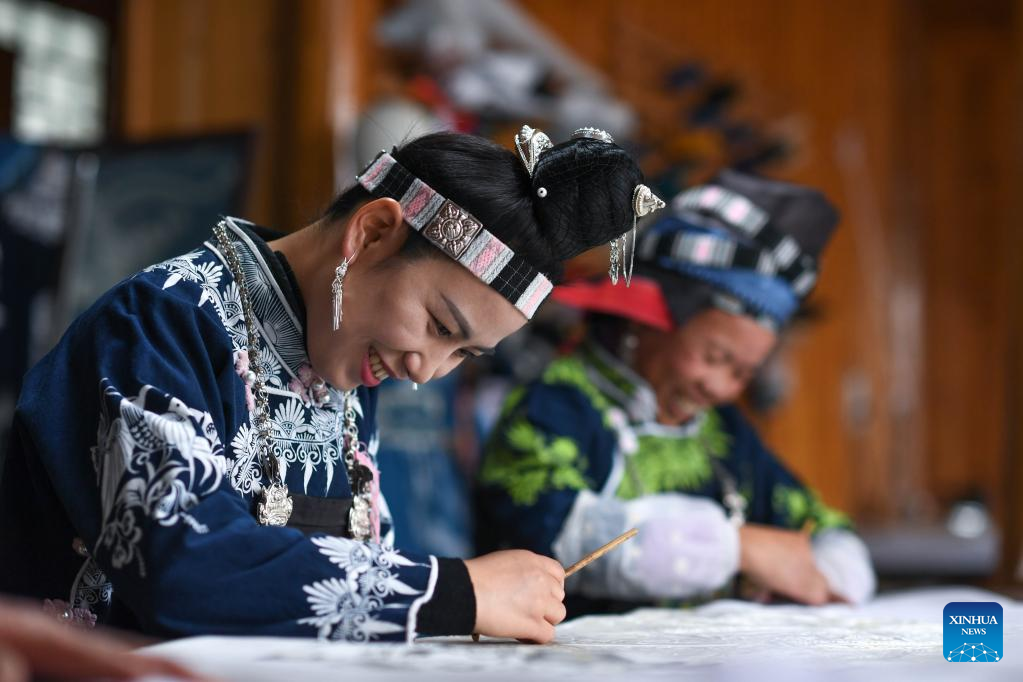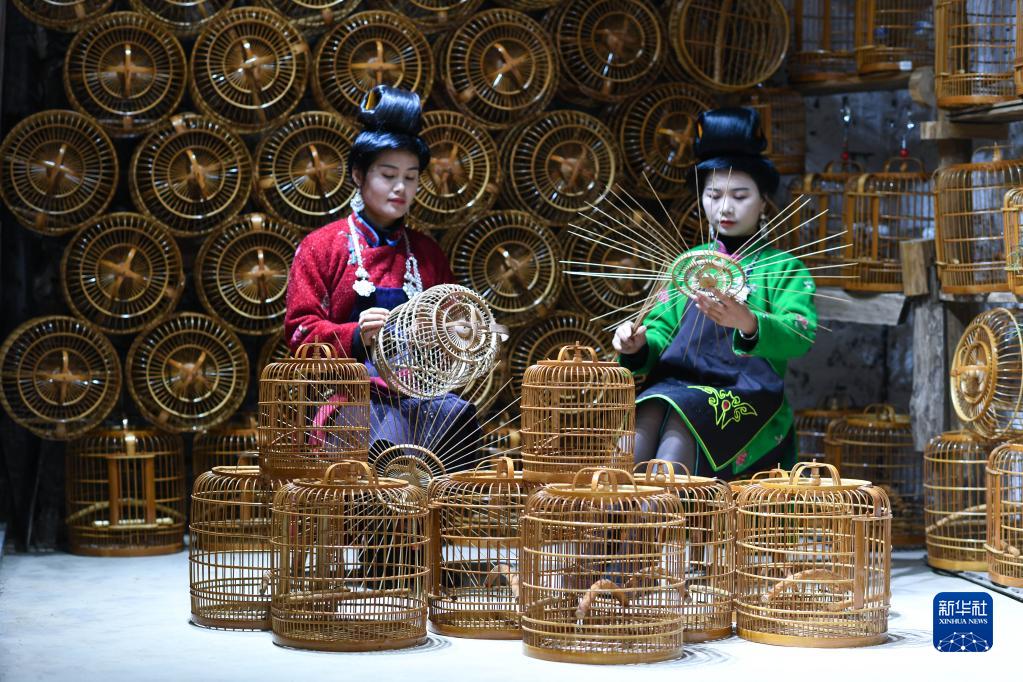Intangible cultural heritage helps boost rural vitalization
Since 2021, China’s Ministry of Culture and Tourism (MCT), together with the Ministry of Human Resources and Social Security and the National Administration for Rural Vitalization, has been supporting local governments in boosting rural vitalization through intangible cultural heritage (ICH).
To date, China has established over 2,500 ICH workshops, including more than 1,400 in areas that have been lifted out of poverty, helping residents find employment and increase their incomes locally.

Villagers make batik paintings at a batik workshop in Kala Village in Longquan Township of Danzhai County, southwest China's Guizhou Province, Nov. 16, 2022. (Xinhua/Yang Wenbin)
Miao embroidery of Songtao Miao Autonomous County in southwest China’s Guizhou Province is a national ICH item. The county has helped over 4,800 residents learn embroidery skills and find jobs locally by establishing Miao embroidery workshops.
“I can take care of my family and make money through embroidering while carrying forward fine traditional Chinese culture,” said Tian Maoyuan, an embroiderer in the county.
Quyang county in north China’s Hebei Province has helped over 8,000 residents in 73 villages find employment locally by leveraging ICH items such as Quyang stone carving, and promoting a business model that integrates ICH workshops and rural households.
Similarly, Wuzhishan city in south China’s Hainan Province and Yining city in northwest China’s Xinjiang Uygur Autonomous Region have promoted a business model that integrates ICH workshops, companies and rural households by establishing production bases in communities and villages while providing training courses to embroiderers and sending orders, design drawings and raw materials to them, allowing them to work at home.
Rural areas have an abundance of outstanding ICH resources, and establishing workshops on popular ICH items with clear advantages and large numbers of practitioners can help many people find jobs and pool talent for rural vitalization, according to an official with the Department of Intangible Cultural Heritage under the MCT.

Wang Qiu (right), an inheritor of a traditional bird cage weaving technique, works on a bird cage in Kala village of Danzhai county, Qiandongnan Miao and Dong autonomous prefecture of southwest China's Guizhou Province, on Nov. 16, 2022. (Xinhua/Yang Wenbin)
In recent years, the MCT has worked with relevant departments to support e-commerce platforms in holding online ICH shopping festivals.
On the days around this year’s ICH shopping festival, over 150 prefecture-level cities held related activities, and sales of ICH-related products exceeded 2 billion yuan (about $286.9 million), according to statistics. More than 1,000 ICH workshops from 334 counties lifted out of poverty participated in the ICH shopping festival.
In recent years, multiple localities have motivated various parties, including enterprises, e-commerce platforms, and industry associations, to help ICH promote production and sales, thus increasing incomes for people.
Furthermore, localities have promoted sales of ICH-related products in scenic areas and historical and cultural streets.
As talent is essential to rural vitalization and the inheritance of ICH, young people are returning to their hometowns to carry forward ICH.
The MCT has carried out large scale training to continuously improve ICH inheritors’ skills, innovation abilities, market awareness and copyright awareness. Many ICH inheritors have studied in colleges and universities such as Tsinghua University and Sichuan University, large cultural enterprises and Internet companies, raising the standard of their design, production and marketing and the value of ICH-related products.
Photos
Related Stories
- Rural tourism thrives in China
- Village in SW China’s Yunnan embarks on new journey of rural vitalization
- Technology boosts watermelon planting in winter in NW China’s Gansu
- Chinese intangible cultural heritages shine brightly as protection and inheritance strengthened
- Ancient village in South China’s Guangxi finds new life by tapping cultural, tourism resources
- Craftsman builds village for intangible cultural heritage items to thrive in SW China's Guizhou
- Art injects fresh life into previously impoverished village in SW China's Guizhou
- Rural museums burgeoning across China
- Chinese universities contribute to rural vitalization strategy
- China's traditional tea-making enters UNESCO cultural heritage list
Copyright © 2022 People's Daily Online. All Rights Reserved.









